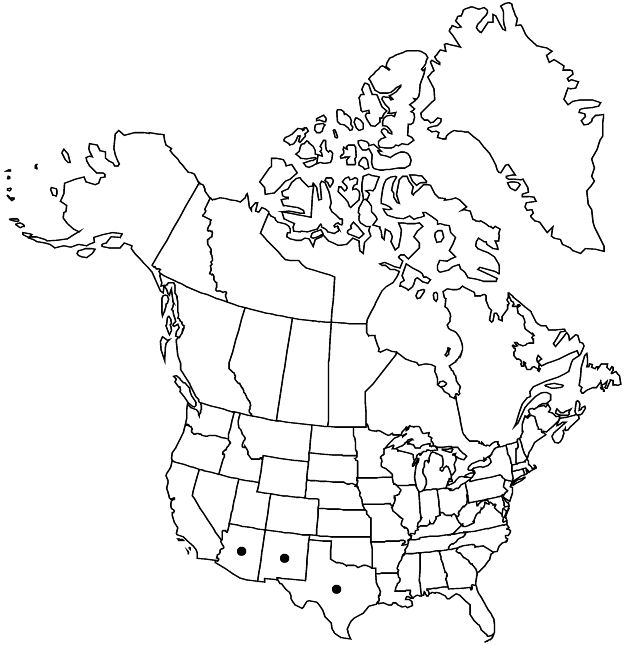Sageretia wrightii
Proc. Amer. Acad. Arts 20: 358. 1885.
Shrubs, densely and intricately branched, usually weak and straggling, sometimes tall and narrow. Branches erect or spreading to arching or arcuate-decumbent, densely short-strigillose, hairs arching antrorsely. Leaves persistent, opposite to subopposite; blade broadly oblanceolate to oblong-elliptic, 0.5–2(–3) × 0.5–1(–2) cm, base rounded to obtuse, margins entire or mucronate to remotely serrate, apex obtuse, rounded, or retuse, surfaces sparsely tomentose, quickly glabrescent; veins not prominently raised abaxially. Inflorescences terminal or in axils of distalmost well-developed leaves, primary axis 0.5–1 cm, lateral branches 0(–2). Drupes purple to black, subglobose to depressed-globose, 5 mm; stones (2–)3.
Phenology: Flowering Mar–Sep.
Habitat: Rocky canyons and hillsides, riparian areas, washes, desert grasslands, scrub, oak and pinyon-juniper woodlands.
Elevation: 900–1500 m.
Distribution

Ariz., N.Mex., Tex., Mexico (Baja California Sur, Chihuahua, Coahuila, Durango, Sonora).
Discussion
Selected References
None.